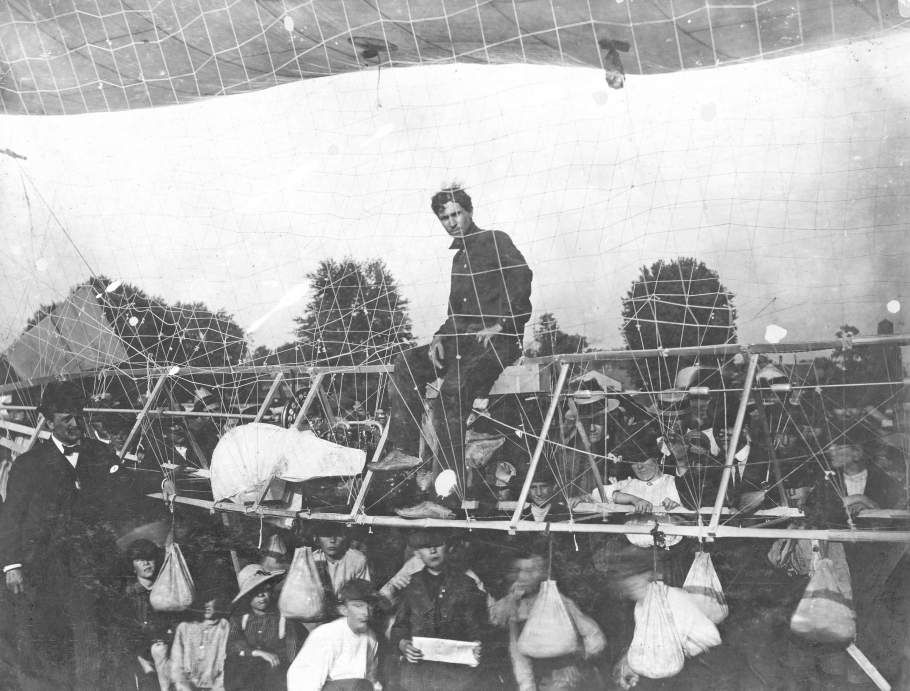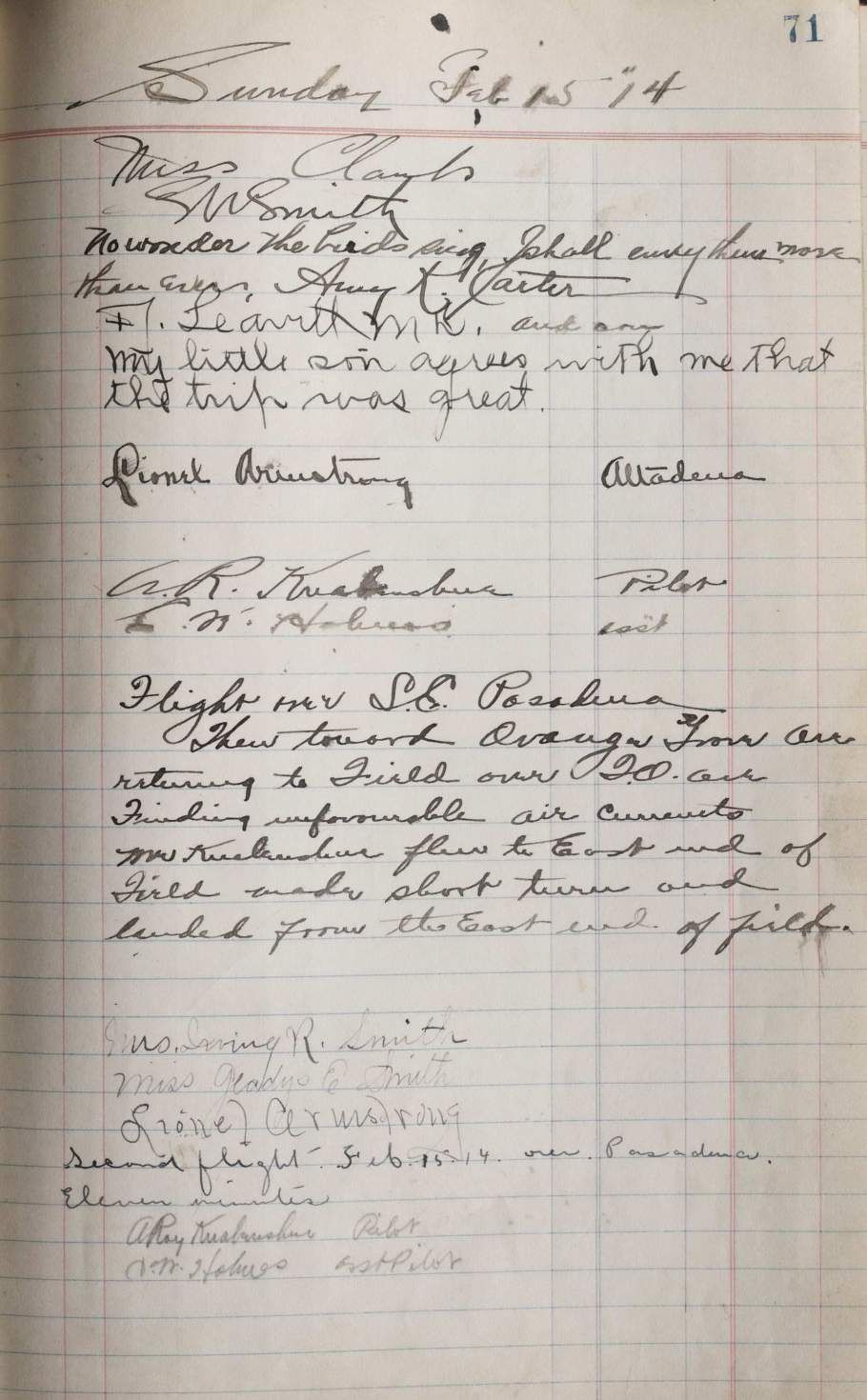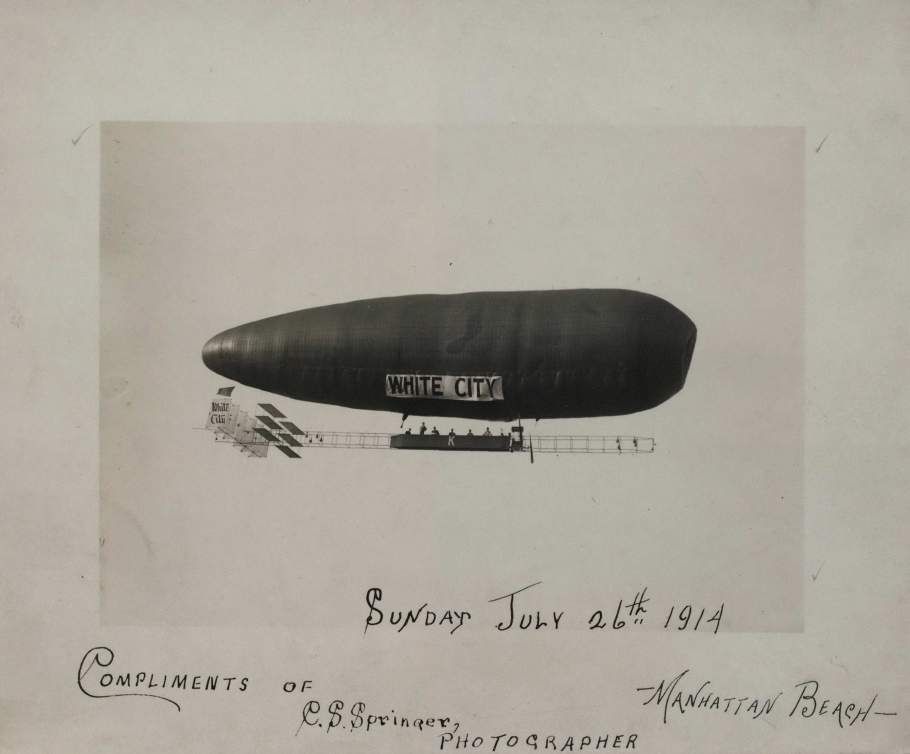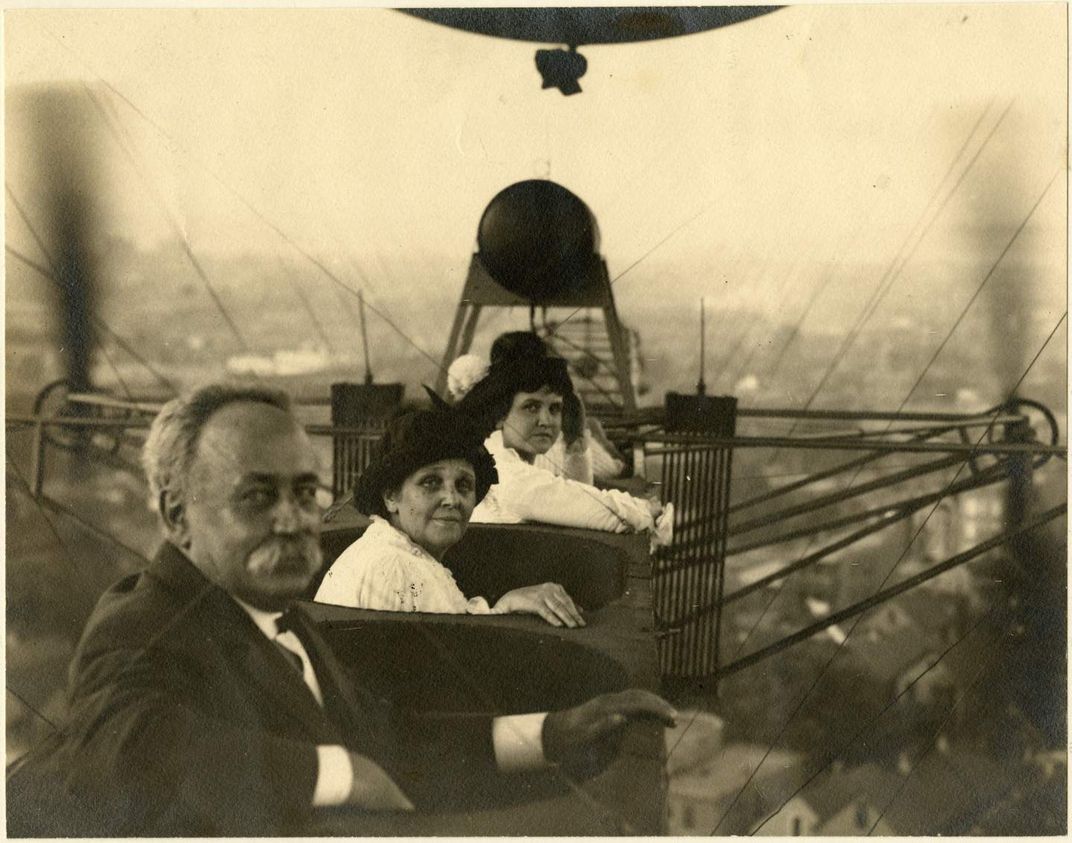Chauffeur of the Skies: A. Roy Knabenshue’s Passenger Registries
Even in the early days of 18th century ballooning, the novelty of leaving earth led many to seek thrills as passengers aloft, some even going so far as to get married in the air! As airships and airplanes joined balloons in the skies, flying continued to be a high ticket attraction.
:focal(720x566:721x567)/https://tf-cmsv2-smithsonianmag-media.s3.amazonaws.com/blogging/featured/SI-96-16169.jpg)
Even in the early days of 18th century ballooning, the novelty of leaving earth led many to seek thrills as passengers aloft, some even going so far as to get married in the air! As airships and airplanes joined balloons in the skies, flying continued to be a high ticket attraction.

A. Roy Knabenshue became interested in lighter-than-air flight after seeing a balloon ascension when he was five years old. He bought his first captive balloon in 1899 and set up at fairs and carnivals, charging admission for ascensions. He also began to develop his own free balloons. In 1904, he was the first person to successfully pilot a dirigible in the United States, flying Thomas S. Baldwin’s California Arrow at the Louisiana Purchase Exposition. He then built his own dirigibles and provided rides for admission.
The National Air and Space Museum Archives holds the 1913 and 1914 Knabenshue flight logs and registry of passengers. According to Knabenshue, his wife, Mabel, and Mrs. Clarence Smith were the “first lady passengers in [a] dirigible in America,” on September 29, 1913, as they took in the sights over Pasadena. Passengers gave rave reviews of their experience. Amy K. Carter rhapsodized, “No wonder the birds sing. I shall envy them more than ever.” Rex de Roselli raved, “Most wonderful sport I have ever indulged in.”

In June 1914, Knabenshue transported his airship to Chicago. There he had a long standing agreement with the White City Amusement Park, built on the location of the 1893 Pre-Columbian Exposition. When passengers signed the log, they signaled their “willingness to undertake all risks in connection with the airship flight…and fully release The White City Construction Company and A.R. Knabenshue from all liability.”

These logs provide a glimpse into the “who’s who” of Chicago that paid admission for the excitement of flying. Theatrical press agent Frank Cruickshank and Charles Leichliter, a local newspaper man, went up on both the trial flight on June 16 and the official first flight later that day. Others included Grover Sexton, automobile editor of the Chicago Herald; H.H. Kohlsaat, newspaper empresario; and George F. Harding, Jr., Chicago businessman. Members of the Beifeld family, who held a stake in White City and the Sherman Hotel, frequently joined Knabenshue.

Mrs. Ernest Metzger and Mrs. A.J. Gurney celebrated the 4th of July in the sky. The next day, the Chicago Examiner published an amusing story of Metzger “calling on herself” by dropping her card while flying over her house. On a particularly thrilling day, Knabenshue’s wife flew along with his father and mother!

In his unpublished memoir, “Chauffeur of the Skies,” Knabenshue recalled renting an Erneman Camera to make a motion picture of his 1914 Chicago flights. He and Bill Selig had collaborated on such a film in 1905, but this time Knabenshue was determined to do it himself. “One of the sights that I enjoyed from the airship was the sail boats….I could picture the skipper and his family thoroughly enjoying the sail on Lake Michigan.”
Knabenshue later shared this film with the U.S. Army and Navy. He credited it for his 1917 military contract to build observation balloons. This film has been preserved in the collections of the National Archives and Records Administration and a 2017 Chicago Tribune article shares how the cityscape changed over the span of 100 years.
Knabenshue continued to fly until he suffered a heart attack in 1949. After his death in 1960, his personal papers were donated to the National Air Museum, the predecessor to the National Air and Space Museum. The digitized contents of the A. Roy Knabenshue Collection can be viewed on the Smithsonian Online Virtual Archives (SOVA). Soon selected parts of the collection, including the memoir and passenger lists, will be available for volunteers to transcribe on the Smithsonian's Transcription Center (there are other collections up for transcription as well)!
